Out of the Mist
We reached St Kilda after an eight-hour sail from Lochmaddy in 28 knot winds, on a grey-black sea wrinkled, serrated, swollen and rolling. Some of us bowled over by seasickness; the rest holding to bits of heeling boat in our storm gear, searching for the lost horizontal. 100 miles from the mainland, on the western edge of Europe, at last, in the evening, this profound grey form pushing up from the water, soaked in mist. Gaelic singers Julie Fowlis, Mary Smith and Mary Jane Lamond from Cape Breton, along with Lewis storyteller and maker Ian Stephen and SAMS oceanographer Emily Venables, are our crew this week, and they’re straight in at the deep end. Waves blast the bow, white-beaked dolphins stitch in our slipstream, gannet and sheerwater coast on currents between trough and peak. We slip into Village Bay on the island of Hiorta in near-dark and anchor below the jagged outline of Dun in calm waters, exhilarated, exhausted, relieved.
In the morning, the ruined village emerges in sunlight and stillness, swept round by thinly-grassed slopes which rise to sheer cliffs on the other side of the island. Around the bay the incredible sight of a modern society of stone; hefted by hand from mountain scree and placed for roads, walls, houses, byres, cleits for drying meat and thatched black houses. The saddle of the valley is filled and littered and patterned with stone: rounded sheep pens below, and around a thousand cleits scattered across the uplands right up to the highest ridge; home now to the small brown Soay sheep, whose wool is shed in flags and drifts all over the island, and to vicious arctic skuas, which dive with brutal accuracy at bare heads as we cross their nesting grounds.
Stone by stone, year by year, since prehistoric times, the island has been reformed, its stones gathered for shelter, until it was finally abandoned in 1930 after too many hard seasons. But some of the St Kildans and their descendents survive, and so do the traditions they gathered by hand, passed knee to knee along the single paved street of the village, from schoolroom to church to hilltop to shoreline, in all weathers. Mary Smith has gathered songs and poems of St Kilda; Ian Stephen brings home its stories, and our wanderings around the village are accompanied by moments of song and tale-telling among the stones, surrounded by sheep, between the beacon hills. Mary and Mary Jane sing a St Kildan song about a bird; its bright call woven into the song. ‘These aren’t the songs of a joyless people’, says Mary.
At the top of the mountain, the grasses give way suddenly to salt air and the absolute fall of 1000 foot cliffs. On a ledge below us a fulmer chick sits fatly in grey-white down, waiting to be fed. Tiny orchids, buttercups, shanks of greasy wool. Mary sings of a woman whose lover has fallen from these cliffs catching seabirds. It’s not hard to imagine. clouds of every kind ring the world’s horizon. Here, we’re not on the margins at all, but at the centre of a green place of passage and exchange, a meeting point for seafarers, migrating birds and all weathers; a green place of memory, stone and song.
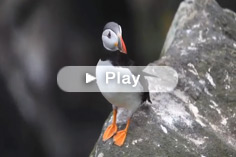

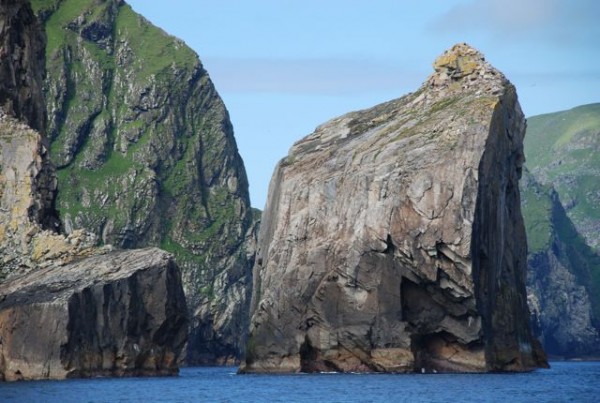
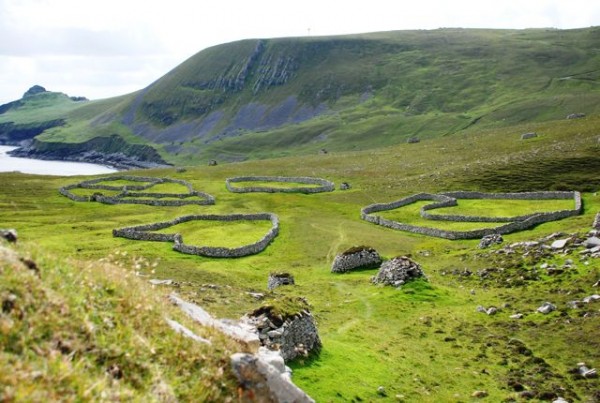
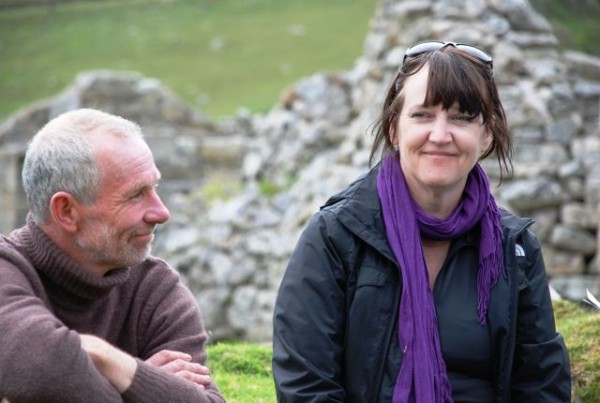


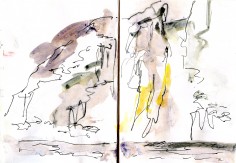
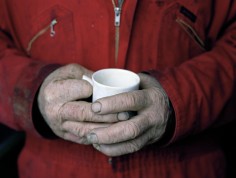
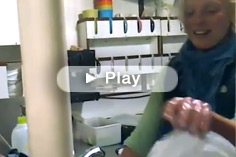


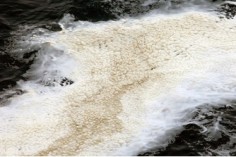
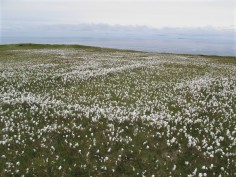

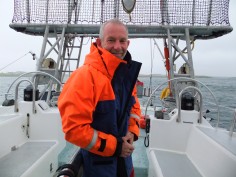








Hi Ruth,
Just a quick note to say I’m enjoying your posts from the seas and islands. It’s great to be able to follow the journey in this way and to still feel connected. I’m slowly processing the whole experience… and gradually the flotsam and jetsam of ideas are coming to the surface – some clear and many others fragmented. So much to take in from just one week! I know I need to return to Barra soon to pick up on conversations and develop ideas.
Anyway just wanted to say hello and thanks for everything…and thanks to the crew and other Cape Farewell-yins. So much positive energy! Back on solid ground the swaying has finally stopped, but it seems all the action is not in the city but in the sea.
All the best for now,
Steve
I wish I could have tagged along for more of the expedition – it looks so incredible and I’m very jealous of everything you’ve seen and experienced. I think you’re back on the mainland at this point – I hope to hear the stories when I see you next!
Kristina